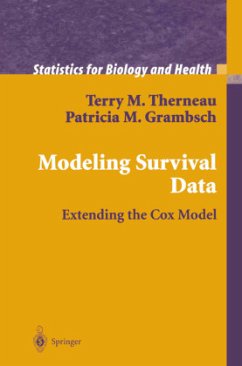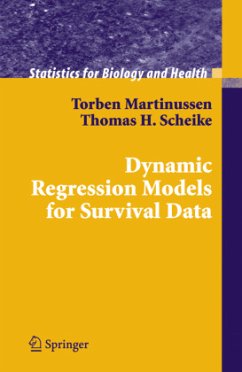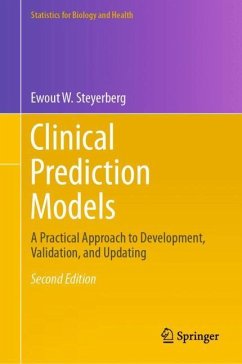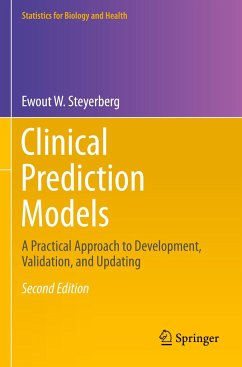
Analysis of Multivariate Survival Data
Versandkostenfrei!
Versandfertig in 1-2 Wochen
115,99 €
inkl. MwSt.
Weitere Ausgaben:

PAYBACK Punkte
58 °P sammeln!
There are many books covering survival data, that is data covering the time to some event. In the standard case, the event is death, but the topic is much broader. This book, however, covers the extension to multivariate survival data. In popular terms, this means everything where more than one time is involved. One such type is the survival times of several individuals, which are related in some way, and where independence cannot be assumed. Another type of data is the multiple data, where we study repeated occurrences of the same event. A further type is the times to several events for the same persons, like outbreak of disease, time to complication and death. Such types of data are only briefly covered by other books. Most of the material in this book is only available in journal papers, some of it is not available in writing at all
Survival data or more general time-to-event data occur in many areas, including medicine, biology, engineering, economics, and demography, but previously standard methods have requested that all time variables are univariate and independent. This book extends the field by allowing for multivariate times. Applications where such data appear are survival of twins, survival of married couples and families, time to failure of right and left kidney for diabetic patients, life history data with time to outbreak of disease, complications and death, recurrent episodes of diseases and cross-over studies with time responses. As the field is rather new, the concepts and the possible types of data are described in detail and basic aspects of how dependence can appear in such data is discussed. Four different approaches to the analysis of such data are presented. The multi-state models where a life history is described as the subject moving from state to state is the most classical approach. The Markov models make up an important special case, but it is also described how easily more general models are set up and analyzed. Frailty models, which are random effects models for survival data, made a second approach, extending from the most simple shared frailty models, which are considered in detail, to models with more complicated dependence structures over individuals or over time. Marginal modelling has become a popular approach to evaluate the effect of explanatory factors in the presence of dependence, but without having specified a statistical model for the dependence. Finally, the completely non-parametric approach to bivariate censored survival data is described. This book is aimed at investigators who need to analyze multivariate survival data, but due to its focus on the concepts and the modelling aspects, it is also useful for persons interested in such data, but














